- Continue Shopping
- Your Cart is Empty
Homemade Miso

What You'll Need
Equipment
- measuring cups and spoons
- large bowl or jar for soaking beans
- pressure cooker (optional)
- meat grinder or masher
- parchment paper or plastic wrap
- small crock or wide glass container
- weight and plate or cover
- tea towel and pillowcase or flour sack (see recipe details on this)
Ingredients
- water for soaking and cooking soybeans
- Dry Soy Beans 9 oz (255g)
- Koji 10 oz (283g)
- Sea Salt 5 oz (142g) divided
Miso is an ancient Japanese food, high in protein and rich in beneficial probiotics that aid digestion. It’s a cleansing food, that is used to detoxify and invigorate the entire system, and is intended to be eaten in many forms. We made a miso butter to put on mashed roots, but it can be mixed with water, broth, vinegar, or any number of liquids to make a seasoning for cooked vegetables, or blended with oil and vinegar to create a delicious miso dressing. It can be rubbed on roasted fowl for a salty, umami glaze, or spread as is onto the neutral, nutty slabs of homemade tofu. Blended with dashi, it is known as miso-shiru, the ubiquitous, delicious soup form of miso that serves as the first course in many a Japanese meal. The warming, rich, and mellow flavor primes the stomach for the meal to follow.
However you choose to eat miso, it’s fascinating to consider how long it has been with us. Like so many of our traditional ferments worldwide, it used to be commonplace for each family to nurture their own pots of miso, among other fermented foods. As modernity and all of its mixed blessings encroached, the practice of making miso at home became less common. However, interest in traditional foods is once again on the rise, as people worldwide recognize the benefits to gut and brain, and reforge the ancient connections between microbes, health, and flavor.
Making miso at home is a simple process. While it takes a long, slow while to ferment, the actual process is straightforward and easily done in the home kitchen. We enlisted the help of Hakouya, founded and run by Eriko Yokoyama-Gilman and Masumi Diaz, to teach us about the process of making miso. We present their recipe here for a mellow white miso made with boiled soybeans, but the process is much the same for chickpea, barley, and other substrates. Steaming the soybeans instead of boiling activates the Maillard reaction, browning rather than leaching color from the cooked beans; this changes the flavor, and makes a red miso.
The magic of miso happens when the mould Aspergillus oryzae meets steamed brown rice, forming a product known as koji. As the mould runs through the rice, it inoculates the rice with its spores, the seeds of future miso. The koji is then dehydrated and sold in a form that looks to the eye like an ordinary polished rice grain. This is added to cooked beans or grains and allowed to ferment for no less than 4-6 months. Koji is available in Japanese markets, or online at www.culturesforhealth.com and rhapsodynaturalfoods.com.
We are exceedingly grateful to Eriko and Masumi of Hakouya, for teaching us about miso, and the traditions of their native Japan. This is the sharing of food and knowledge and ideas that makes the world at once smaller, richer, and more connected. And tastier. Gut microbes and tastebuds rejoice.
Directions
Soak the dry soybeans in about 6 cups of filtered water for 18-24 hours.
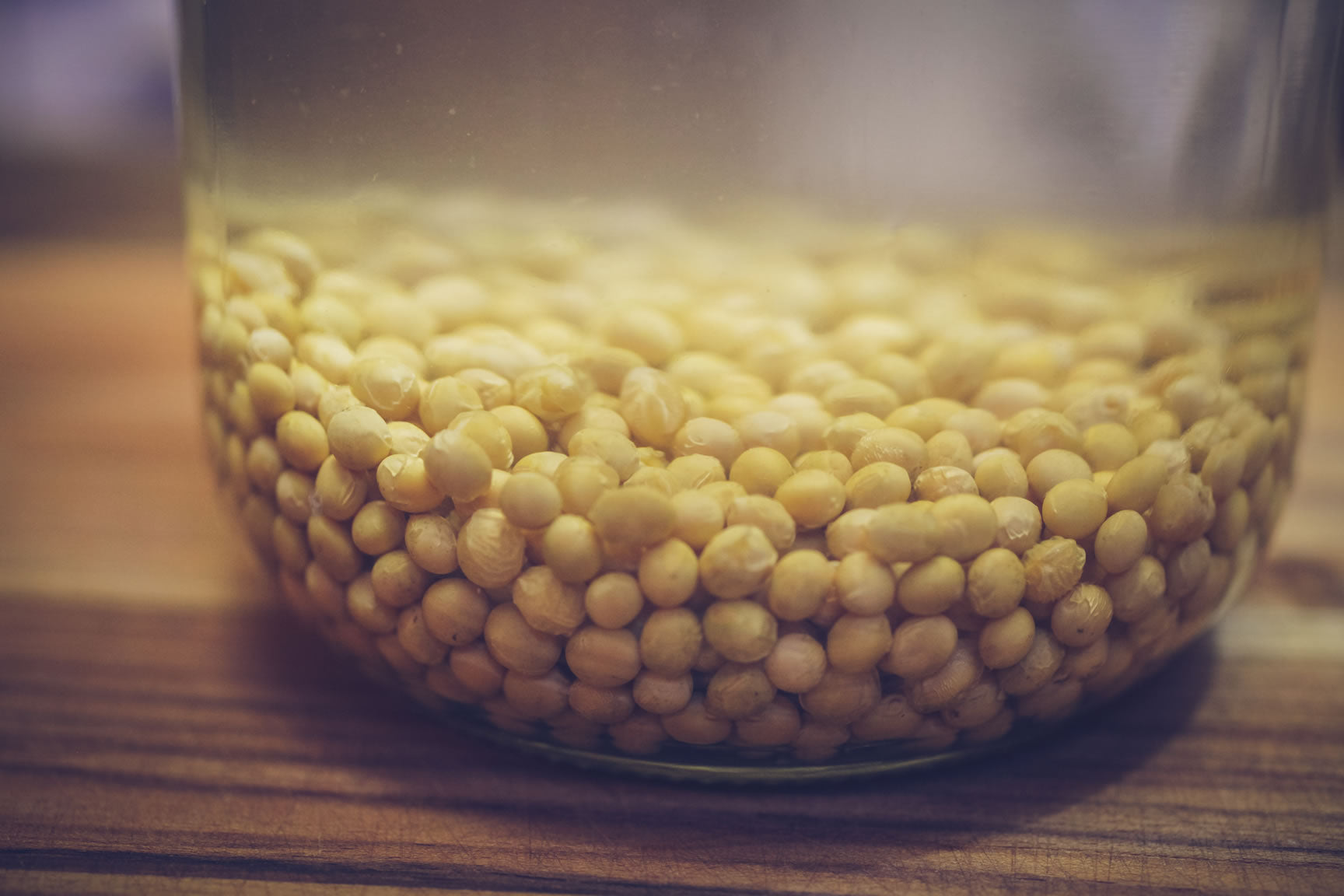 Cook the soybeans over low heat until they are soft, but not falling apart to mush, usually about 4-6 hours. Use of a pressure cooker will reduce the cooking time greatly.
Cook the soybeans over low heat until they are soft, but not falling apart to mush, usually about 4-6 hours. Use of a pressure cooker will reduce the cooking time greatly.
A traditional method to test for doneness is to squeeze a cooked bean between 2 fingers. A slight pressure should split the bean softly apart.
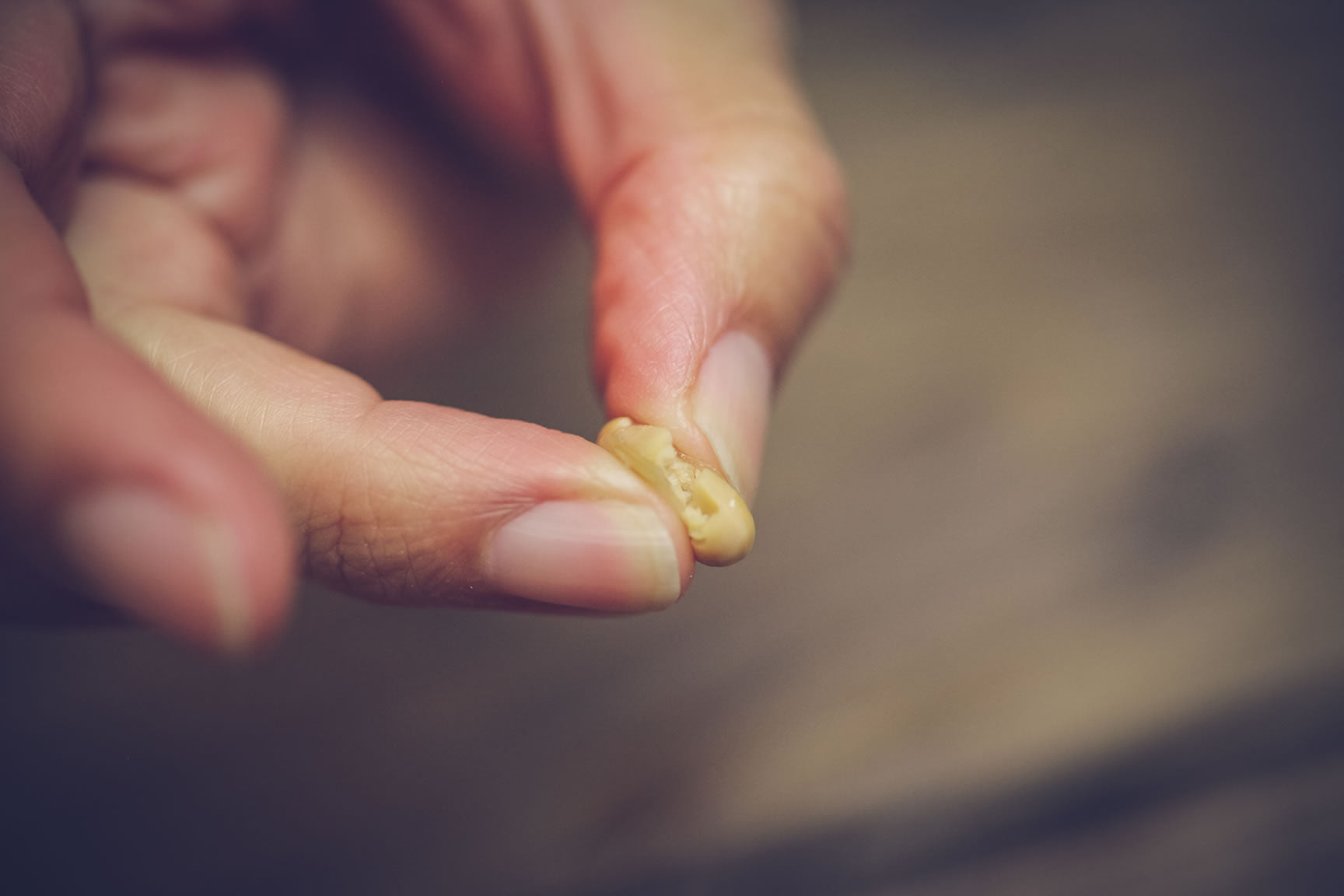
Strain the beans from the cooking liquid, reserving the liquid for later use. Grind the beans in a meat grinder, or mash them very well with a potato masher. Do not use a blender of food processor, which will make the paste too fine.
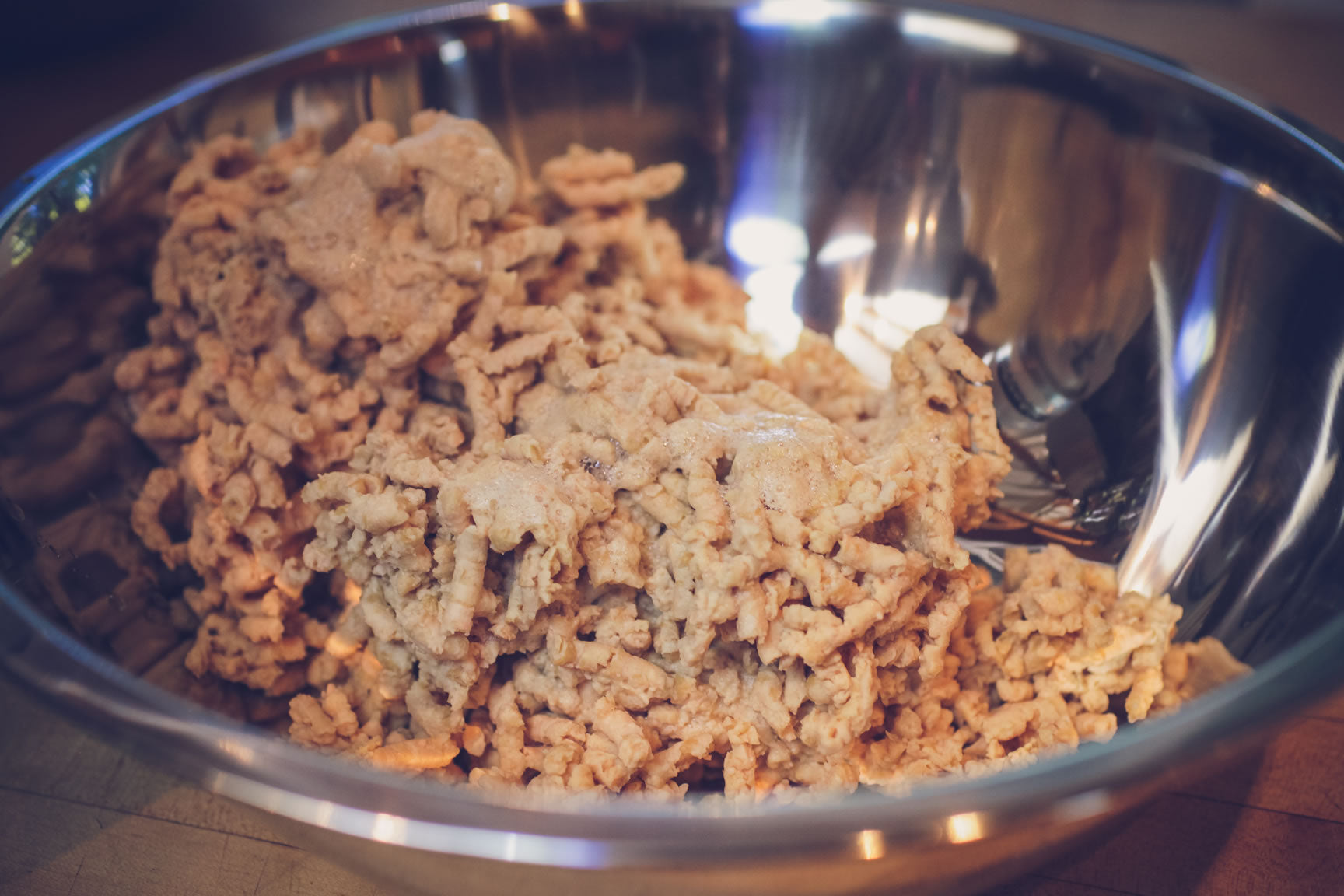
In a large bowl, mix the koji and all but 1 1/2 teaspoons of the salt together. 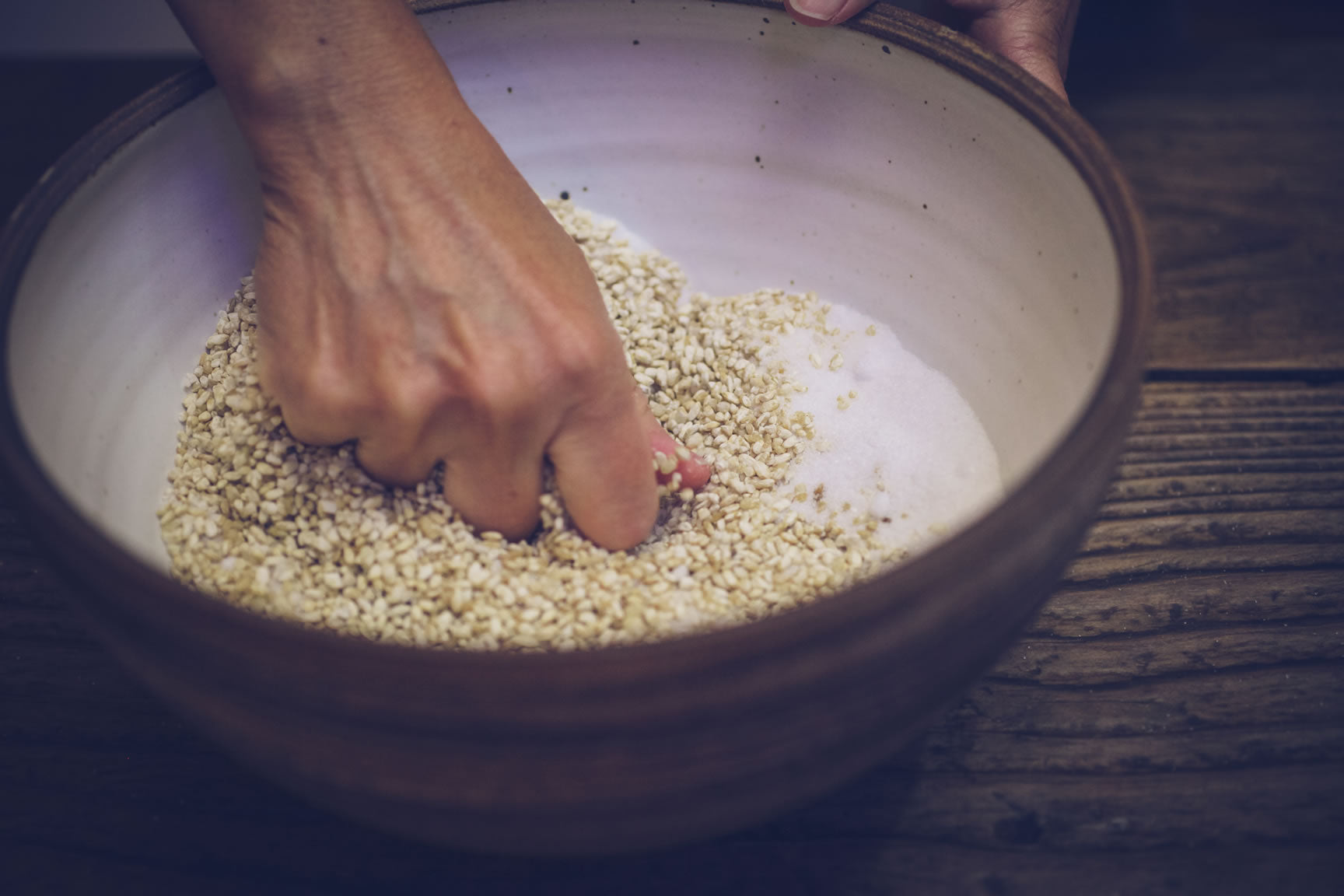
Add the ground soybeans and mix well, using hands or a wooden spoon.  If the mixture seems crumbly or does not stick together well, add a bit of the reserved cooking liquid and mix throughly.
If the mixture seems crumbly or does not stick together well, add a bit of the reserved cooking liquid and mix throughly. 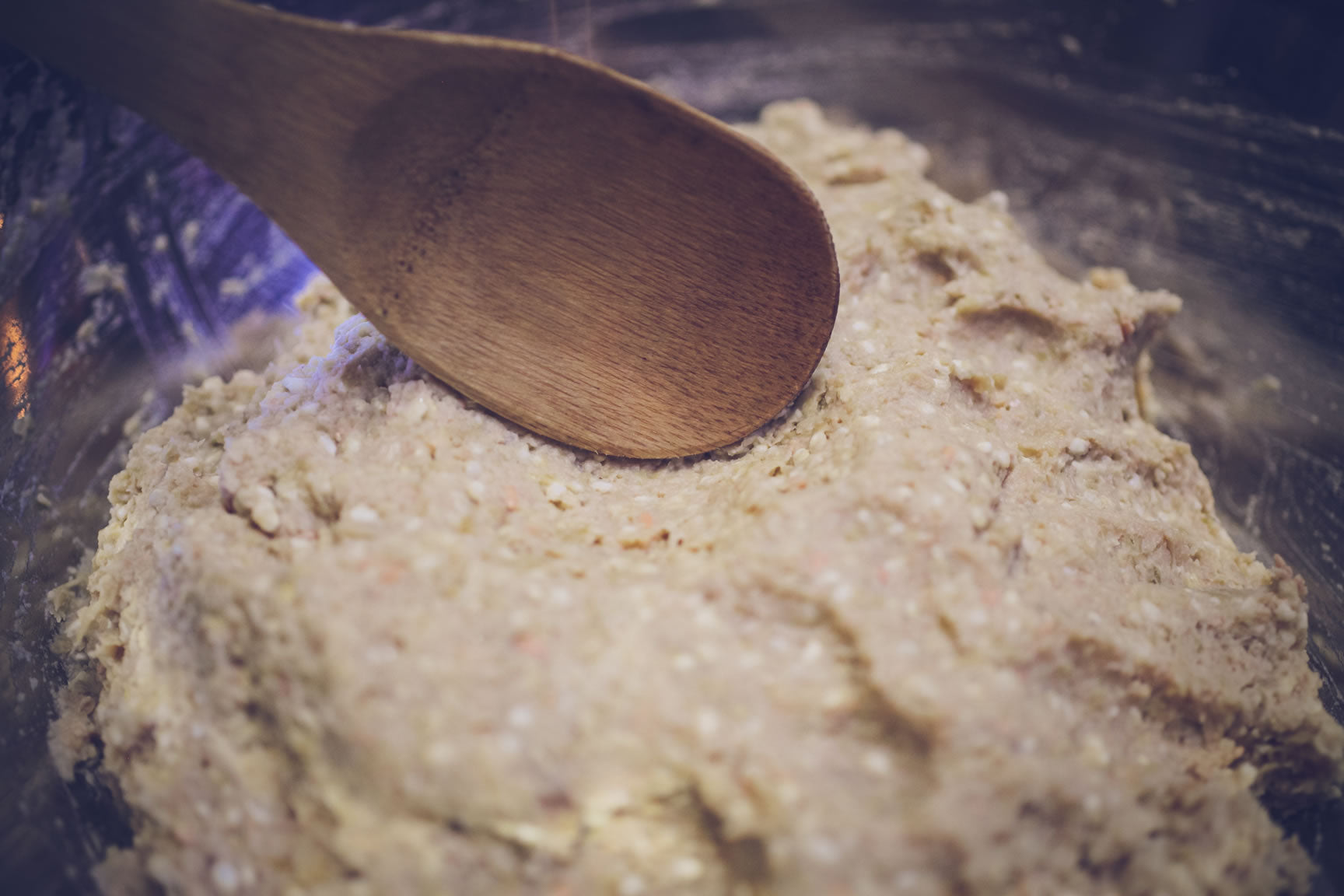
Sanitize a crock or wide glass container. Sprinkle 1/2 teaspoon of salt on the bottom of the container.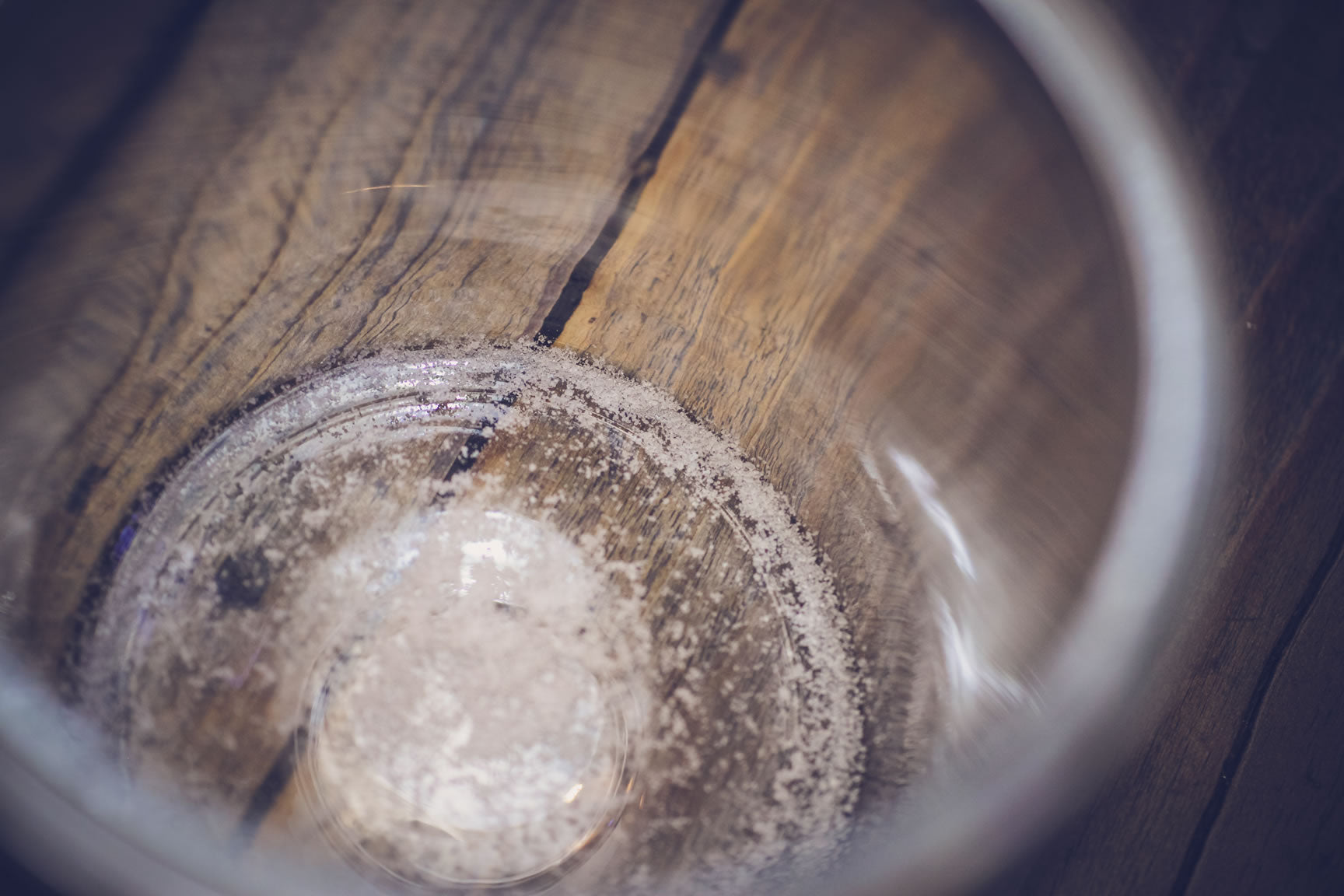
Form the koji-soybean mixture into balls that fit easily in the palm. 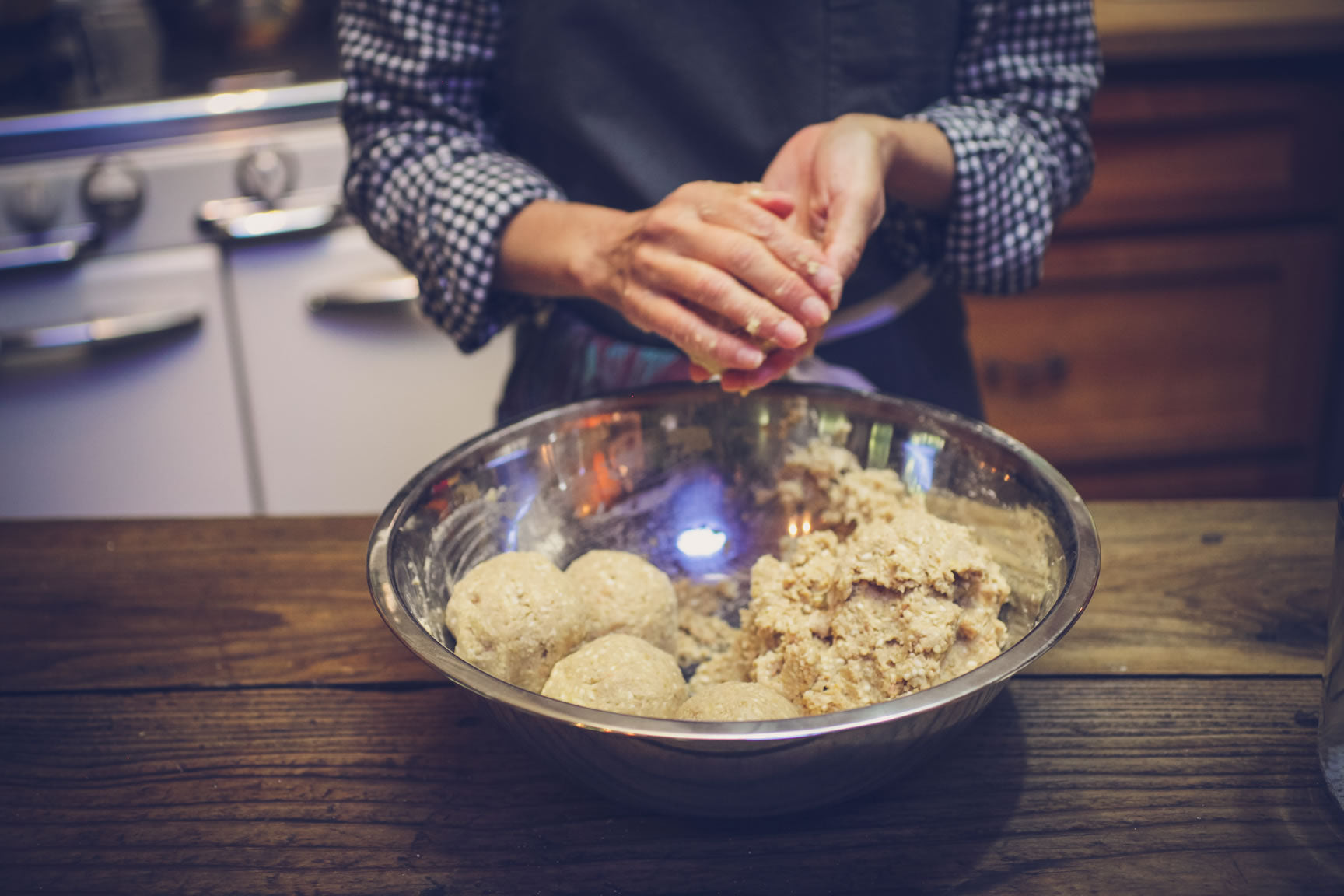 Fling the balls with “great force” onto the bottom of the container, one by one. The goal is to eliminate all air pockets through your forceful flinging! Use your hand to pack down any remaining air spaces as the container fills up.
Fling the balls with “great force” onto the bottom of the container, one by one. The goal is to eliminate all air pockets through your forceful flinging! Use your hand to pack down any remaining air spaces as the container fills up.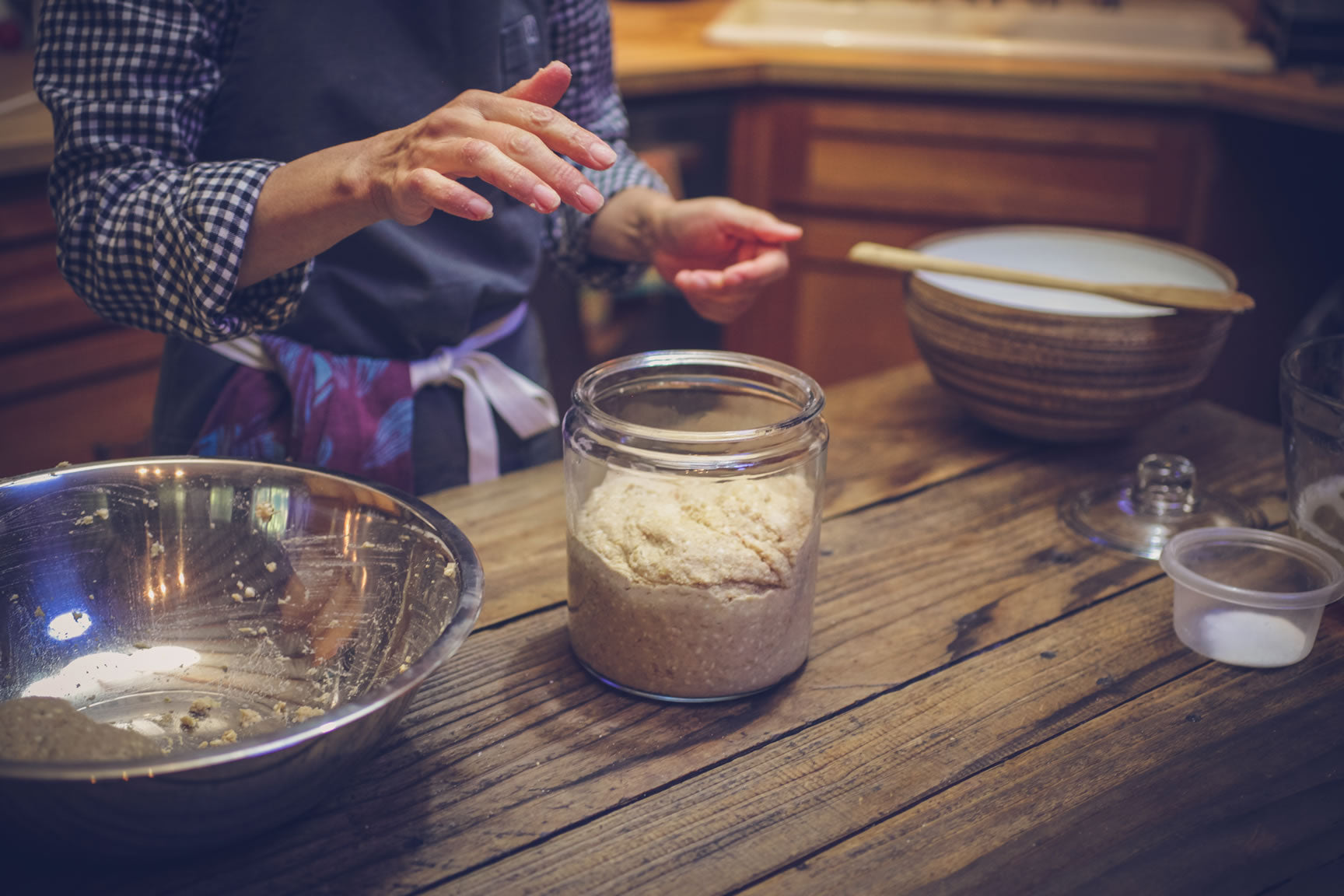
Smooth the top of the surface flat, and sprinkle the last teaspoon of salt over the surface of the paste.
Cover the surface with a double layer of parchment paper. 
Add a weight above the parchment, of about one pound. Traditional sauerkraut weights would work if using a crock, but the glass jar is a nice window into the body of the miso as it ferments. Here, we used a bag of salt to weigh the miso down.
Cover the top of the container with a flour sack, cheesecloth, or other porous cover.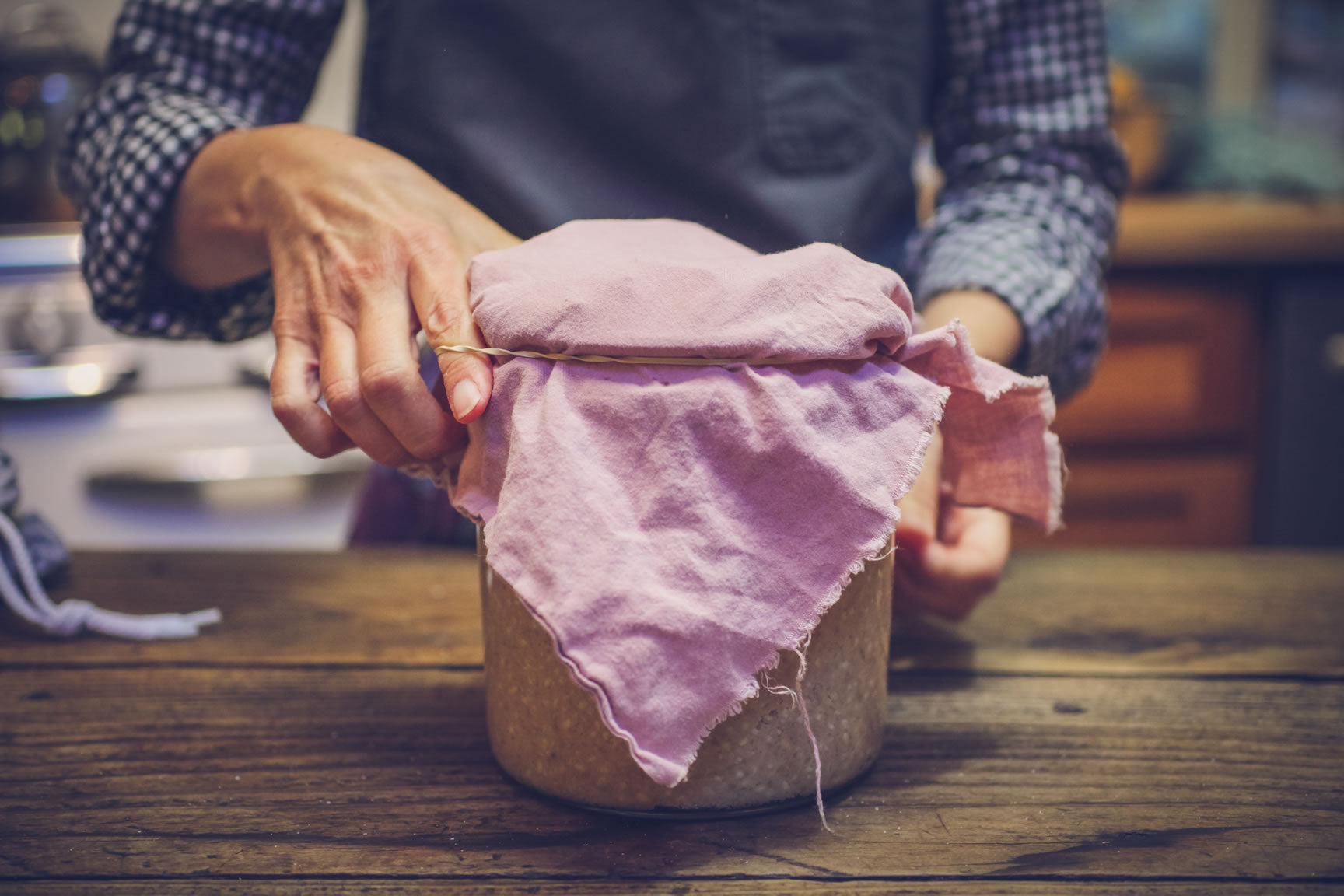
Allow this cover to drape down over the sides, or encase the entire crock into a pillowcase, to keep the ferment dark and safe from dust. A flour sack stitched up the sides makes a good sized miso-cover; the ladies at Hokouya have specially dedicated cloths and homemade sack-cases for their miso. 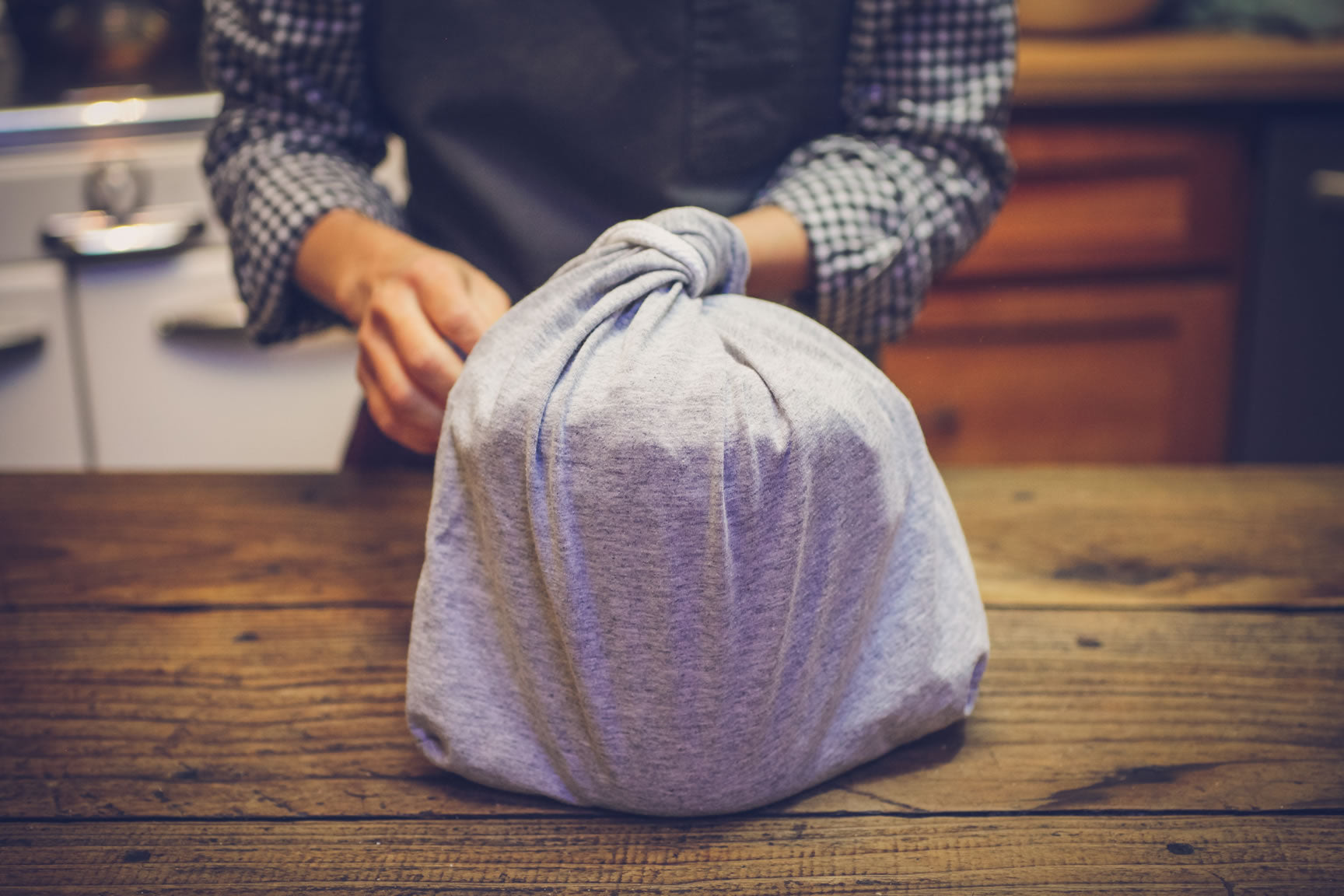
Place in a cool, dark location to ferment. for 4-6 months. The koji used in this recipe is meant to be a quick-acting one, but the term is relative; it finishes in about 4 months rather than 6 or more. However, all miso may be aged for long periods of time, if desired. The flavor intensifies as it ferments, becoming stronger and more concentrated. The koji also breaks down more as it ages, making a smoother, less textured ferment.
Check your ferment every couple of weeks. You will see a slight darkening around the surface; this is normal oxidation, and is no cause for worry. If a white mold develops, it should be scraped off, but is generally harmless, though it can affect flavor slightly. 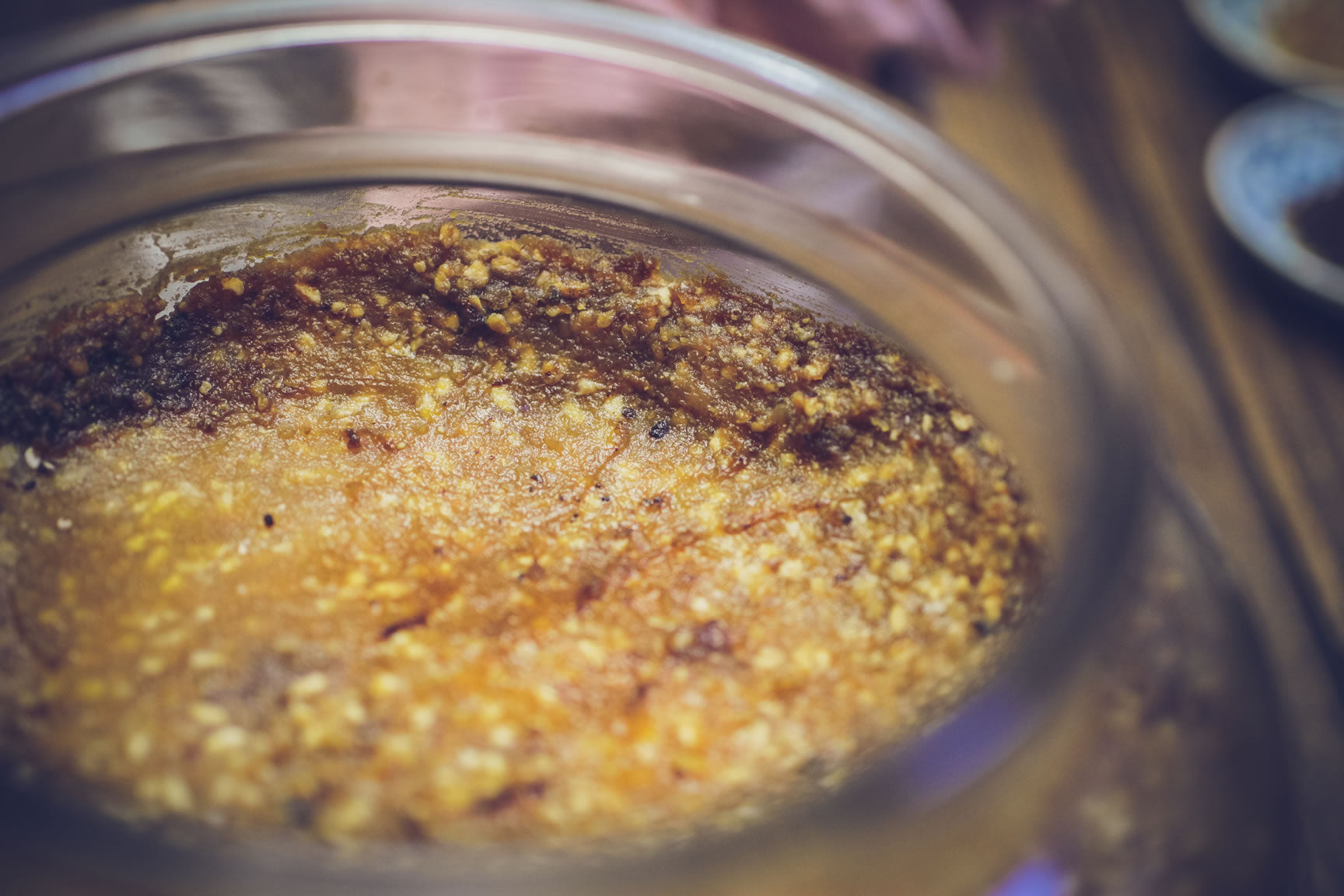 Mold of any other color indicates a problem, however, and should not be consumed. This is very unlikely to happen if proper sanitation and measurements are followed; the salt content and powerful koji culture keep the spoilage organisms at bay.
Mold of any other color indicates a problem, however, and should not be consumed. This is very unlikely to happen if proper sanitation and measurements are followed; the salt content and powerful koji culture keep the spoilage organisms at bay.
Masumi and Eriko brought us several miso samples that they had made; the darkest of these was from 2013. Salty, dark, intense, and funky, the character was wholly different from the sweet white miso, though the ingredients were the same.
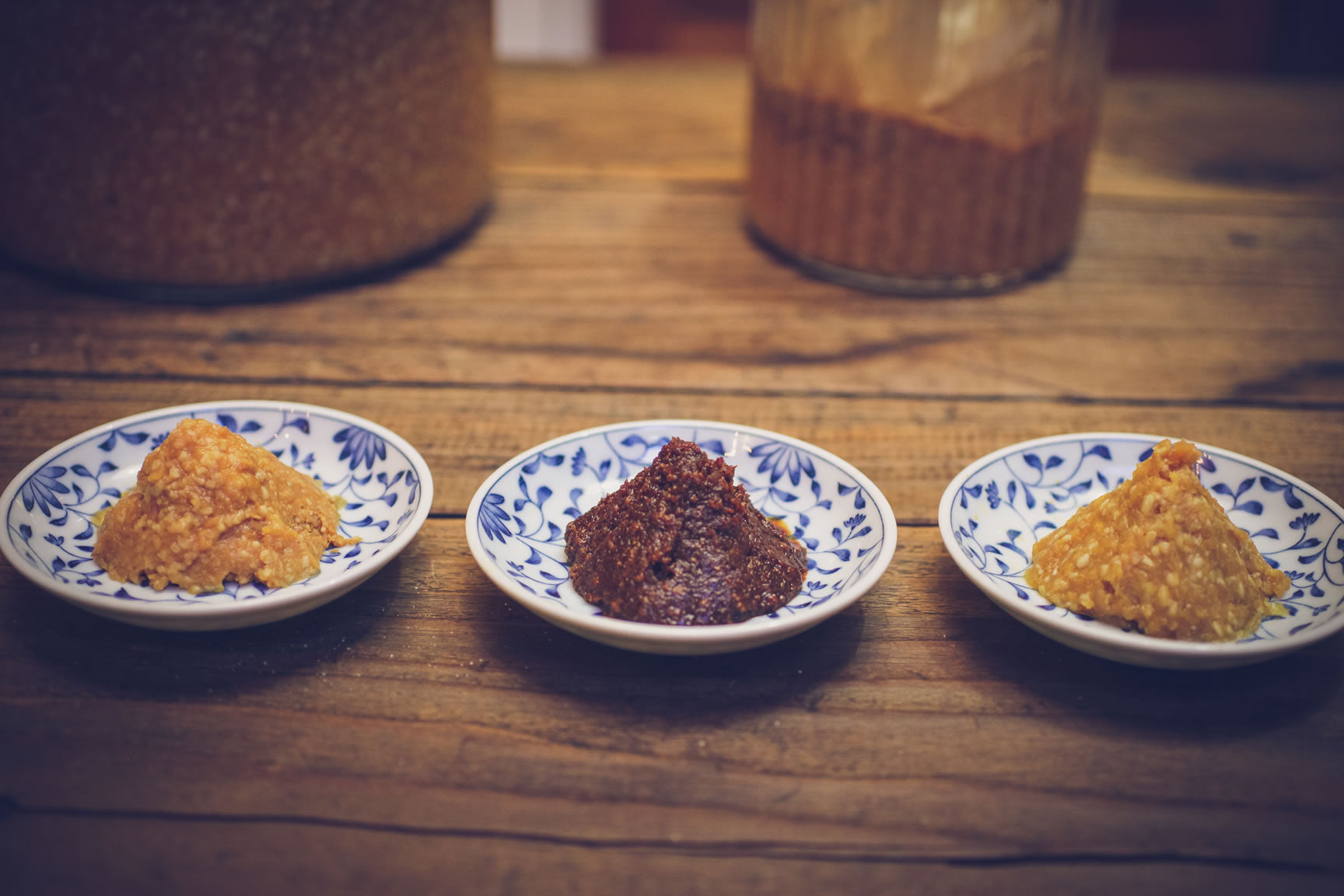
Masumi and Eriko like to make miso soup with a ratio of 1 quart dashi to 3-4 Tablespoons of miso. Dashi is a simple traditional broth made of bonito flakes and/or kombu seaweed. Vegetables may be simmered in the broth, and the miso is added at the end to preserve the probiotic element of the miso, which is destroyed at high temperatures.
Over to You
It’s part of our mission here at Mountain Feed to help you make delicious, sustainable, homemade food more often. Stop by and say hello on Facebook, Twitter, Instagram or Pinterest. Or, as always, you can do it the old fashioned way and come by the store to speak with one of our in-house experts.
